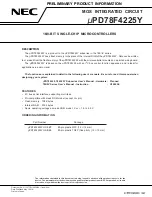
1 Shadedareas indicate reads return 0, writes have no effect. These registers are not physically present.
A001AA55
TXBUF5
0
31
Parity5
3
0
BASE+014h
Memory organization during normal mode
0000000
31
Parity5
TXBUF5
A001AA55
31
0
1
0000000
0000000
0000000
1
1
0
0
8
16
24
1
1
0
1
BASE+014h
BASE+ 400h + 014h
Parity memory locations during test mode (memory mapped)
Parity Memory
1223
SPNU503C – March 2018
Copyright © 2018, Texas Instruments Incorporated
Multi-Buffered Serial Peripheral Interface Module (MibSPI) with Parallel Pin
Option (MibSPIP)
24.11.1 Example of Parity Memory Organization
Suppose TXBUF5 (6th location in TXRAM) in the multi-buffer RAM is written with a value of A001_AA55.
If the polarity of the parity is set to odd, the corresponding parity location parity5 will get updated with
equivalent parity of 1011 in its field.
During parity-memory test mode, these bits can be individually byte addressed. The return data will be a
byte adjusted with actual parity bit in the LSB of the byte. If a word is read from the word-boundary
address of parity locations, then each bit of the 4-bit parity is byte-adjusted and a 32-bit word is returned.
0s will be padded into the parity bits to get each byte. See
for a diagram.
Figure 24-80. Example of Memory-Mapped Parity Locations During Test Mode
NOTE:
Read Access to Parity Memory Locations
Parity memory locations can be read even without entering into parity memory test mode.
Their address remains as in memory test mode. It is only to enter parity-memory test mode
to enable write access to the parity memory locations.
















































